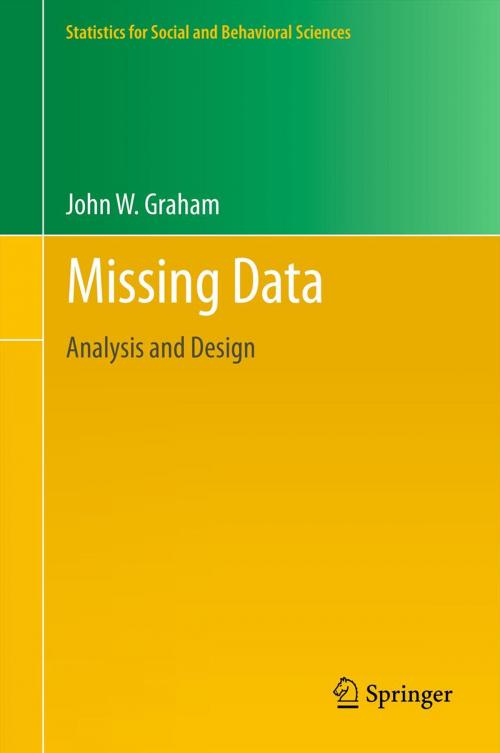Missing Data
Analysis and Design
Nonfiction, Social & Cultural Studies, Social Science, Statistics, Science & Nature, Mathematics| Author: | John W. Graham | ISBN: | 9781461440185 |
| Publisher: | Springer New York | Publication: | June 8, 2012 |
| Imprint: | Springer | Language: | English |
| Author: | John W. Graham |
| ISBN: | 9781461440185 |
| Publisher: | Springer New York |
| Publication: | June 8, 2012 |
| Imprint: | Springer |
| Language: | English |
Missing data have long plagued those conducting applied research in the social, behavioral, and health sciences. Good missing data analysis solutions are available, but practical information about implementation of these solutions has been lacking. The objective of Missing Data: Analysis and Design is to enable investigators who are non-statisticians to implement modern missing data procedures properly in their research, and reap the benefits in terms of improved accuracy and statistical power.
Missing Data: Analysis and Design contains essential information for both beginners and advanced readers. For researchers with limited missing data analysis experience, this book offers an easy-to-read introduction to the theoretical underpinnings of analysis of missing data; provides clear, step-by-step instructions for performing state-of-the-art multiple imputation analyses; and offers practical advice, based on over 20 years' experience, for avoiding and troubleshooting problems. For more advanced readers, unique discussions of attrition, non-Monte-Carlo techniques for simulations involving missing data, evaluation of the benefits of auxiliary variables, and highly cost-effective planned missing data designs are provided.
The author lays out missing data theory in a plain English style that is accessible and precise. Most analysis described in the book are conducted using the well-known statistical software packages SAS and SPSS, supplemented by Norm 2.03 and associated Java-based automation utilities. A related web site contains free downloads of the supplementary software, as well as sample empirical data sets and a variety of practical exercises described in the book to enhance and reinforce the reader’s learning experience. Missing Data: Analysis and Design and its web site work together to enable beginners to gain confidence in their ability to conduct missing data analysis, and more advanced readers to expand their skill set.
Missing data have long plagued those conducting applied research in the social, behavioral, and health sciences. Good missing data analysis solutions are available, but practical information about implementation of these solutions has been lacking. The objective of Missing Data: Analysis and Design is to enable investigators who are non-statisticians to implement modern missing data procedures properly in their research, and reap the benefits in terms of improved accuracy and statistical power.
Missing Data: Analysis and Design contains essential information for both beginners and advanced readers. For researchers with limited missing data analysis experience, this book offers an easy-to-read introduction to the theoretical underpinnings of analysis of missing data; provides clear, step-by-step instructions for performing state-of-the-art multiple imputation analyses; and offers practical advice, based on over 20 years' experience, for avoiding and troubleshooting problems. For more advanced readers, unique discussions of attrition, non-Monte-Carlo techniques for simulations involving missing data, evaluation of the benefits of auxiliary variables, and highly cost-effective planned missing data designs are provided.
The author lays out missing data theory in a plain English style that is accessible and precise. Most analysis described in the book are conducted using the well-known statistical software packages SAS and SPSS, supplemented by Norm 2.03 and associated Java-based automation utilities. A related web site contains free downloads of the supplementary software, as well as sample empirical data sets and a variety of practical exercises described in the book to enhance and reinforce the reader’s learning experience. Missing Data: Analysis and Design and its web site work together to enable beginners to gain confidence in their ability to conduct missing data analysis, and more advanced readers to expand their skill set.















